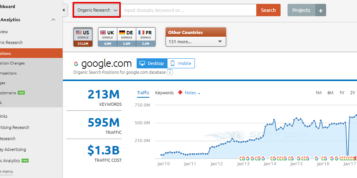You’ve probably followed the recent high profile breakdown in the franchise bidding process for the West coast mainline in the UK. For those who haven’t (or simply weren’t interested), the tender was awarded to First Group, but has since been cancelled after a challenge by Virgin in the high courts.
What I found interesting after listening to the arguments put forward, was how the bidding process fringed on one simple concept that was apparently overlooked by the department for transport – risk. The argument by Virgin trains is that they lost the bidding process because the other party (First) proposed a much riskier, but seemingly more attractive bid.
Working in SEO, and being involved in pitches on a regular basis, I have a lot of sympathy. SEO is possibly one of the riskiest marketing strategies available (you pay upfront, have no idea exactly how ‘much’ you will get, and run the risk of actually making things worse should the execution be particularly poor) and yet many on the procurement side seem to have little appreciation for this issue.
Risk in SEO can present itself in different ways – sometimes it’s the risk of spending a lot of money for relatively little return, sometimes it’s the horrific but not uncommon prospect of gaining a penalty (usually from overly aggressive or low quality link building campaigns) and in worst cases, falling foul of relevant legislation such as FSA compliance.
About 2 years ago we narrowly lost an important pitch to a rival agency – the deciding factor being the timescales to delivery being quoted. The other agency in this case proposed an aggressive campaign, promising top 3 positions on highly competitive keywords within 4 months, compared to our more modest prediction of 6 to 9 months for similar KPIs – something we felt was realistic. In the end, the agency appointed didn’t deliver, and actually caused the client to drop off the first page entirely, likely causing some embarrassment on both sides.
In other cases, we have had companies promising similar KPI’s and timescales, but offering solutions for just a few hundred pounds a month – a budget completely insufficient to make the necessary traction. When a client doesn’t really understand the work involved, and a seemingly comparable end-result is offered, it doesn’t seem unreasonable to choose the cheaper supplier. The issue of course, is that many of the low end SEO solutions tend to rely on fairly automated or cheaply outsourced aspects to the campaign which are not only ineffective, but can also be dangerous.
Despite the frustration of sometimes losing a pitch because another supplier has over-promised what they can deliver, we remain up-front and honest about what campaign goals we expect to achieve. For the sake of both vendors and clients though, I do wish that more clients would build in some consideration of risk and deliverability into their selection criteria.
While this is good in theory, it’s probably got you asking how on earth you can gauge risk, but it’s probably easier than you think.
Forecasts
Probably the first step to being able to assess risk with SEO is requesting a forecast of the expected outcome from the parties pitching. Although forecasts are time consuming for those involved in the pitching process, they can be truly enlightening and give a real indication of what thinking lies behind the promised goals.
In the aforementioned First/Virgin rail bid, it apparently transpired that First projected a flat rate of increase of rail travellers each year (perhaps like the business studies we all did where you drag a figure along a row and simply increase each by x%). In reality, things don’t tend to grow in a perfectly linear fashion and SEO isn’t any exception to this – if the traffic isn’t linked to rankings, then how can the increases be justified?
Unless all assumptions are challenged, such as where the proposed vendor is getting their expected click through rate data from, the forecasts could range from reasonable, to completely unachievable. A great sign of a poor and untrustworthy forecast is one that makes use of the old leaked AOL CTR data to forecast traffic.
If a vendor is unable to supply a forecast at all (especially for a sizeable contract), it’s worth seriously considering whether there is anything backing their promises.
Case Studies
Another critical aspect to selection should really be the cross examination of a vendors previous work – do the results fit the pattern of what is being proposed? Do they have experience of achieving what they have proposed?
Risk can be more difficult to assess with case studies however – most vendors will only put forward case studies where they have achieved success, but sometimes the rankings have changed since the case study was written, and checking can provide an interesting clue. Furthermore, scouring the internet for mentions of previous clients (most agencies can’t resist creating a press release when they win a new client) can reveal how an agency has performed on some other clients.
Does it make sense?
Ultimately, in the absence of detailed technical knowledge, clients often make a judgement of whether a vendor can meet their promises based on a personal feeling, but a lot of this can be deduced logically – does the agencies pricing model make sense (Gold, Silver and Bronze packaged pricing models are one example of a structure which is fundamentally broken), do they pitch the same thing to all clients who they speak to? Do the activity levels quoted make sense for your marketplace?
It’s not easy to assess the risk and deliverability in an SEO pitch, but given the amount of risk involved, attempting to gauge this is essential and should be part of any selection criteria.






